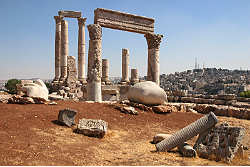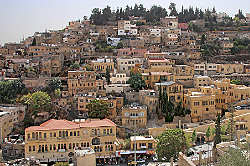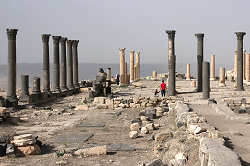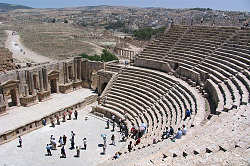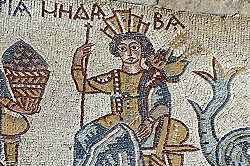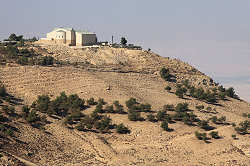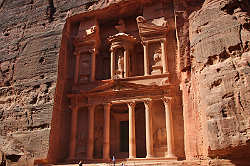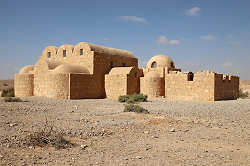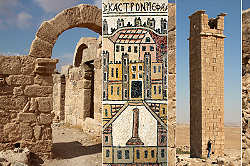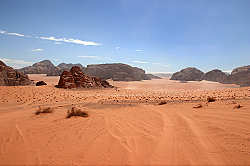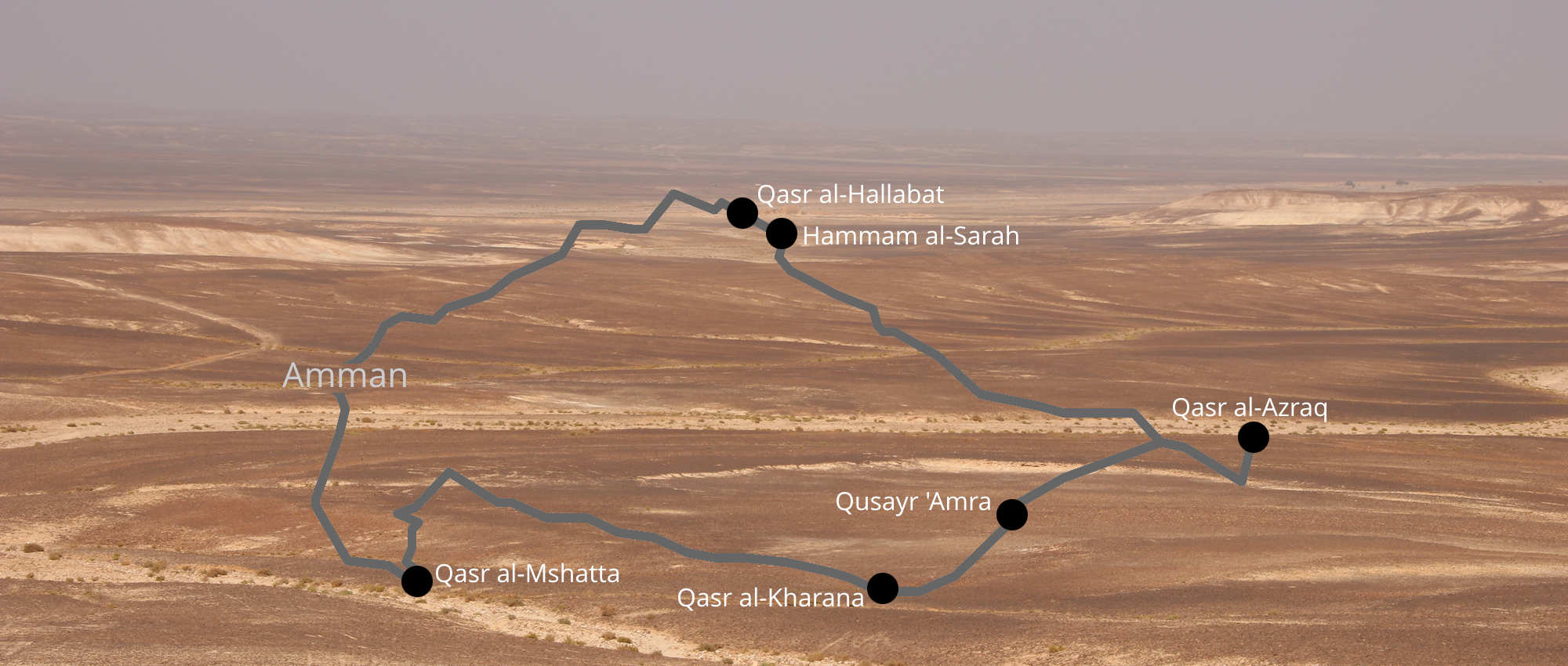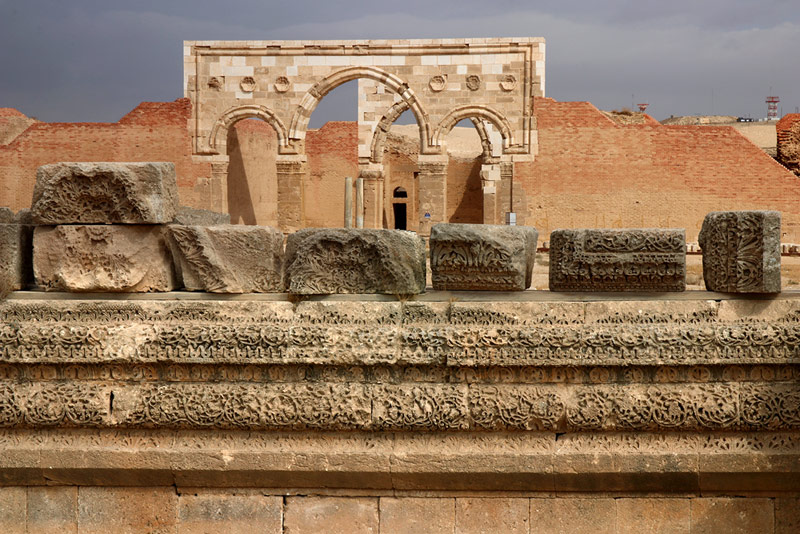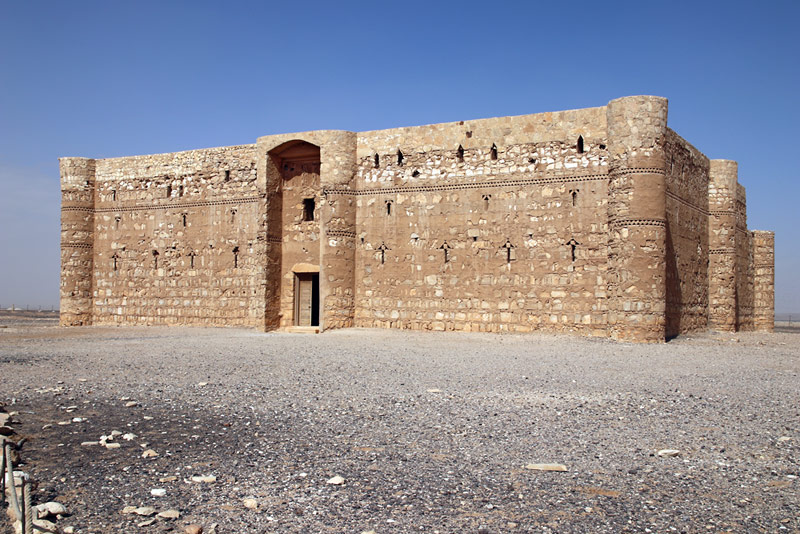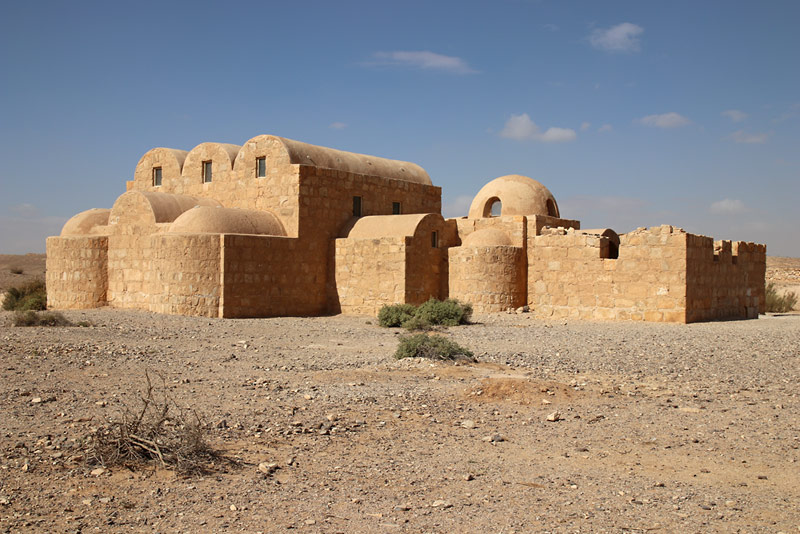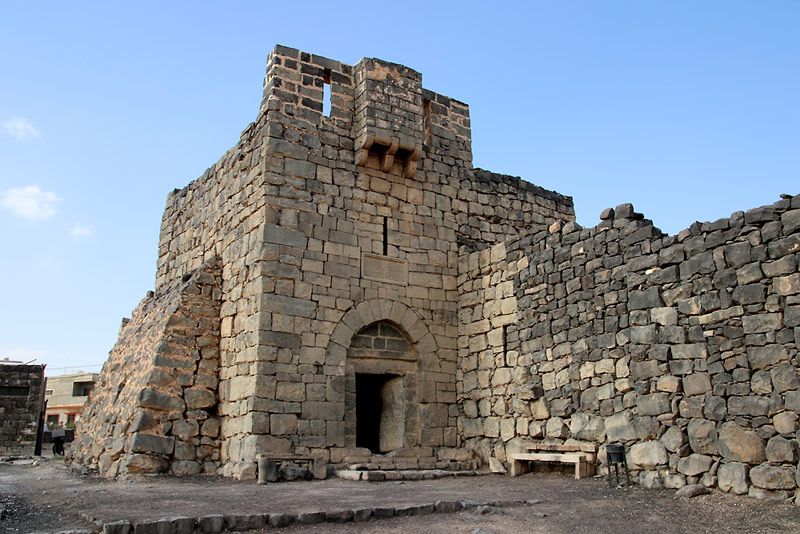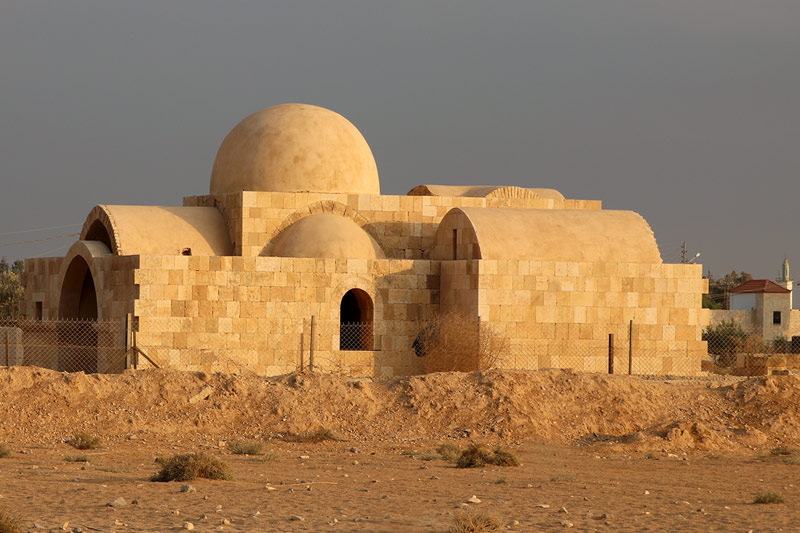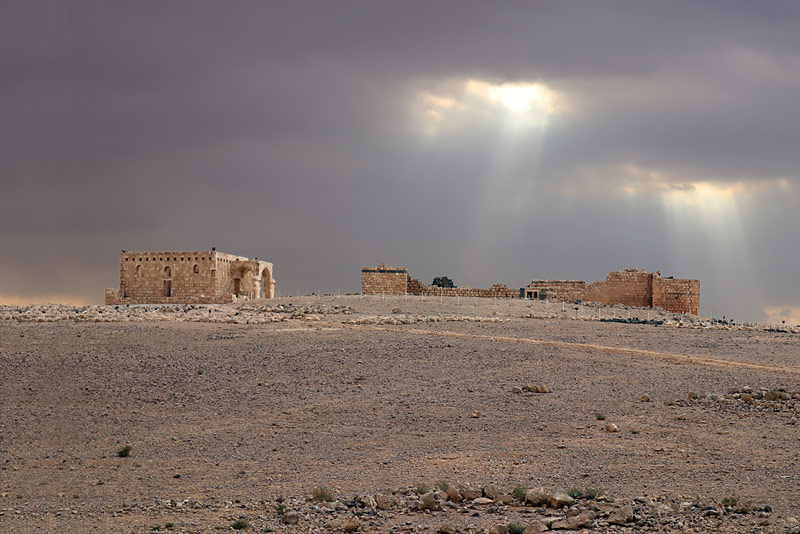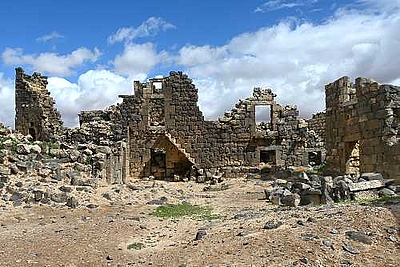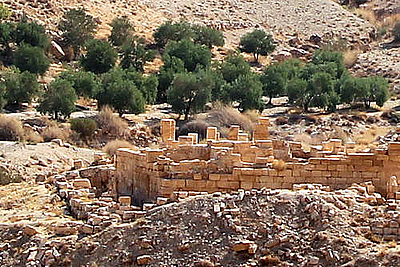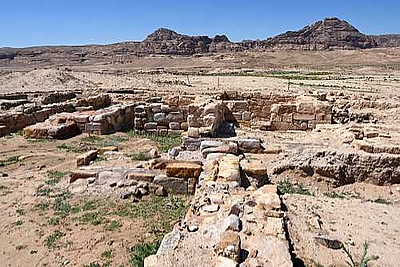East from Amman, easily reachable on a roundtour of about 260 km, are a series of desert retreats, built by Umayyad princes in the 8th century, among them astounding palaces, bathhouses and hunting lodges.
The caliphs of the Umayyad dynasty who had made Damascus their capital in 661 AD, became best known for these 'castles' (Arabic plural qusur, singular qasr), which served a variety of political, residential, agricultural, and commercial purposes. Partially using older architectural structures, blending Greco-Roman, Byzantine and Persian styles, they created some of the most impressive examples of early Islamic art and architecture, including outstanding figurative frescos and reliefs.
